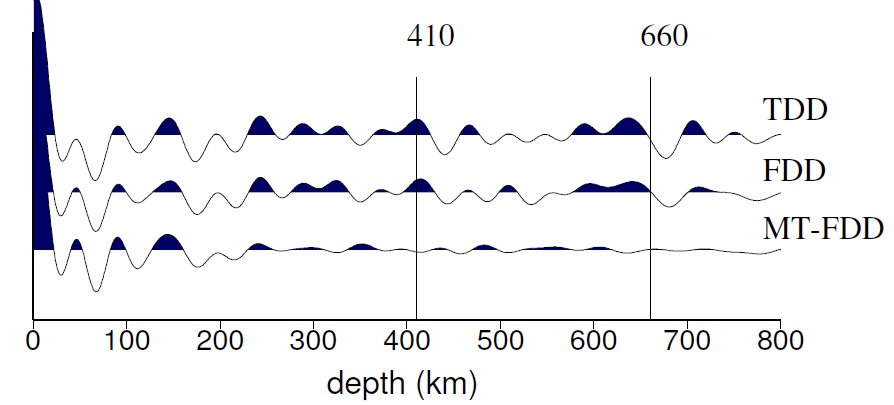|
3056A Derring Hall (Mail Code 0420)
Department of Geosciences, Virginia Tech, Blacksburg, VA 24061
People |
Research |
Publications |
Teaching |
Downloads |
|
Receiver Function Studies of Mantle Discontinuities
Teleseismic P wave gives rise to converted S waves at significant velocity discontinuities in the Earth, which travel slower than the P wave and arrive later in the P-wave coda. Those P-to-S converted phases provide constraints upon seismic interfaces and heterogeneities in the lithosphere. We showed that time-domain deconvolution based on singular value decomposi- tion works better than frequency-domain deconvolution as the problem is often ill-posed and requires regularization. Our experiments based on USArray data show that event stacking and Common Con- version Point (CCP) stacking, which have been widely used to enhance coherent signals from mantle discontinuities, do not average out differences introduced by different deconvolution techniques.
Migrated receiver function stacks at
station H15A (-112.644, 44.6173) using TDD,
FDD and MT-FDD (3 2.5-pi tapers). Each trace
is obtained by stacking migrated receiver functions
for all available events when the station
is in operation.
References
<< Back to Research Ying Zhou June 2012